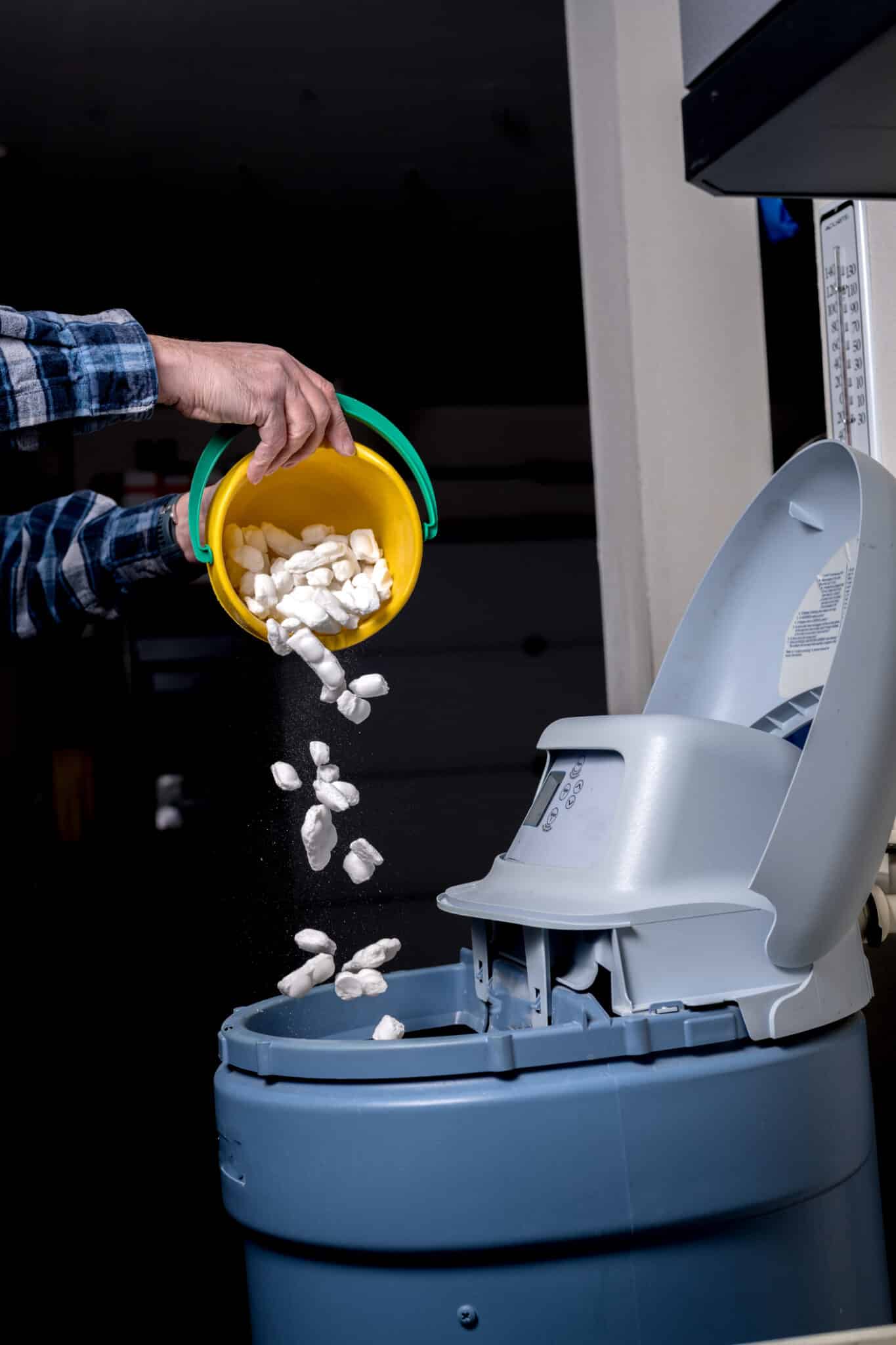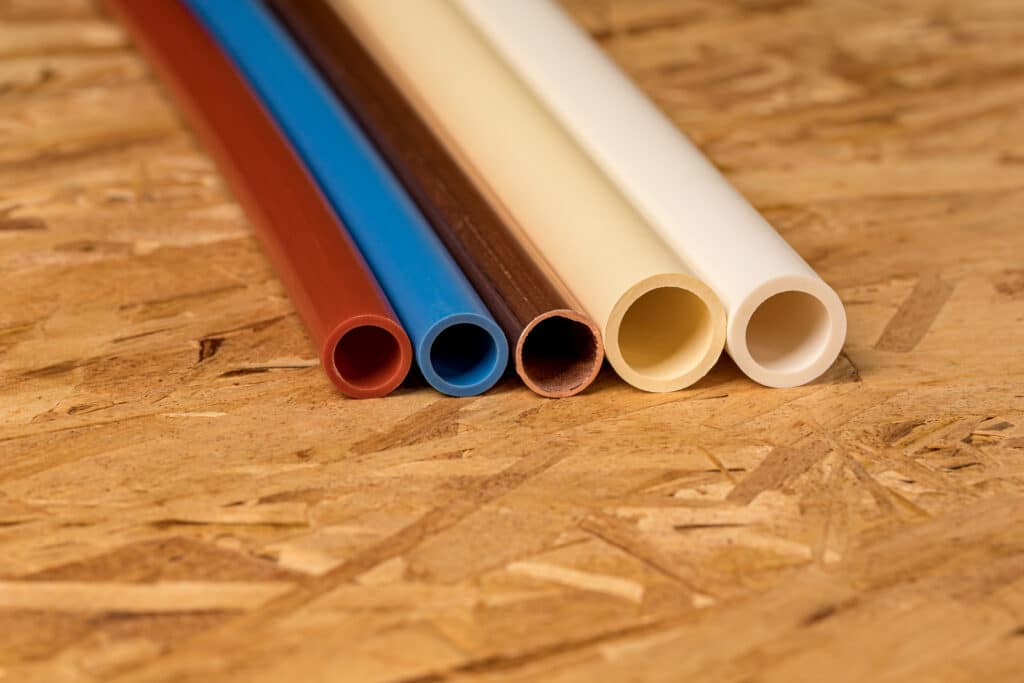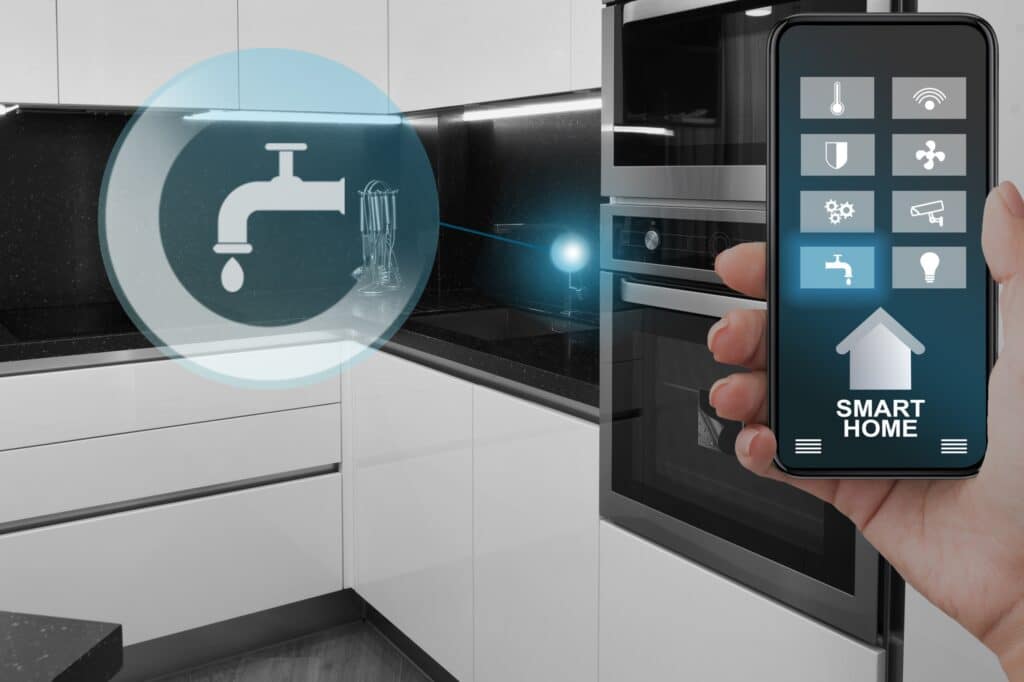Essential Water Softener Installation Tips
Water softener installation is crucial for homeowners in Oklahoma City and Bethany, especially as springtime minerals surge in local water supplies. In March, fluctuating water conditions often highlight the need for an efficient, properly installed system. At Benjamin Franklin Plumbing of Oklahoma City, our focus is on safe, expert service that eliminates the guesswork. With professional water softener installation, your home gets cleaner water and your plumbing gets long-term protection.
Hard water can quietly wreak havoc on your appliances, fixtures, and even your skin. That’s why timely installation, backed by professional experience, makes all the difference. Our team ensures each unit is tailored to your home’s needs, offering seamless performance without the risks of do-it-yourself errors. By relying on trusted plumbers, homeowners gain peace of mind and better water, without the costly aftermath of poor installations.
Many residents attempt DIY water softener setups, unaware of the hidden dangers and code requirements involved. In fact, improper installation often leads to leaks, damage, and voided warranties. Our experts at Benjamin Franklin Plumbing handle every detail, delivering reliable results and long-term system integrity. It’s not just about soft water, it’s about protecting your home and investment.
This guide shares essential water softener installation tips to help you understand what professional service entails. We’ll explore best practices, common pitfalls, and why partnering with licensed plumbers is the smart choice. For Oklahoma City and Bethany homes this March, now’s the time to get your system right.
Why Water Quality Matters in Oklahoma City and Bethany
Water quality in Oklahoma City and Bethany is a top concern for many homeowners, especially as hard water issues persist throughout the year. The municipal water supply often contains elevated levels of minerals like calcium and magnesium. These minerals may seem harmless at first but gradually create buildup in plumbing systems. Over time, this causes reduced water flow, appliance strain, and even early equipment failure.
Hard water affects more than just your pipes. It interferes with everyday tasks such as cleaning, bathing, and doing laundry. Soap reacts poorly with hard water, making it harder to rinse and leaving spots behind. Skin and hair often feel dry and rough, particularly during March when seasonal changes already dry out the air.
Water softener installation addresses these problems by replacing hard minerals with softer elements like sodium or potassium. This process prevents scale buildup, improving water pressure and extending the lifespan of home systems. It also enhances the feel and function of water, making life noticeably more comfortable and efficient. Clean, soft water helps maintain appliance efficiency, protect pipes, and reduce energy use.
Ignoring water quality can lead to expensive consequences over time. Damaged fixtures, blocked pipes, and underperforming water heaters cost homeowners thousands. But with proper water softener installation, those risks are dramatically reduced. Cleaner water ensures smoother operations across all systems, keeping your household running efficiently. In Oklahoma City and Bethany, where water conditions can fluctuate, taking action now makes all the difference.
Understanding the Benefits of Water Softener Installation
Water softener installation is one of the best ways to protect your plumbing system and home appliances over time. Hard water contains minerals that build up inside pipes, reducing water pressure and damaging internal components. These mineral deposits can shorten the life of water heaters, washing machines, and dishwashers. Installing a softening system prevents those issues, saving money and avoiding unnecessary repairs.
Soft water improves your daily routine in noticeable ways, from smoother laundry to spot-free dishes and cleaner shower doors. Soap lathers more easily, reducing residue on skin and clothing while enhancing comfort. In March, with dry air already affecting skin and hair, soft water helps maintain natural moisture levels. Simple tasks become more efficient, and personal care becomes more enjoyable.
Water softener installation also boosts energy efficiency by allowing appliances to work as intended. Water heaters operate faster without mineral blockages, reducing strain and energy consumption. Soft water flows more freely, providing reliable pressure during peak usage times like spring cleaning. These advantages lead to lower utility bills and less wear on household systems.
Proper installation ensures long-term performance and peace of mind without the trial-and-error of guesswork. Safe, professional setup makes sure everything works efficiently from day one. With the right system in place, clean water flows smoothly and consistently through every tap in your home.
Key Factors to Consider Before Water Softener Installation
Making the decision to install a water softener isn’t just about adding equipment, it’s about investing in your home’s future. In Oklahoma City and Bethany, water conditions often fluctuate, making it vital to start with a thorough water analysis. The right system must fit your home’s specific water hardness levels and match your daily consumption needs. Jumping in without this step often leads to underperforming units or oversized systems that waste resources.
Installation isn’t one-size-fits-all, and location matters more than many homeowners realize. The unit needs to be placed near the main water supply with proper clearance for access and servicing. Not every garage or utility room is prepped for this setup, so evaluating the area ahead of time avoids headaches later. Good drainage is also essential, as improper discharge can violate local codes or damage surrounding surfaces.
Capacity plays a critical role in long-term efficiency and comfort. A system too small for your household will regenerate constantly, reducing softening effectiveness and increasing maintenance demands. On the other hand, an oversized model may cycle inefficiently, leading to higher salt usage. Proper sizing isn’t guesswork, it’s a strategic move that maximizes performance and system longevity.
Most importantly, don’t overlook safety and local regulations. Water softener installation involves plumbing, electrical work, and compliance with city codes, all of which affect your home’s integrity. Skipping key steps or cutting corners can result in costly damage and performance issues. When done right from the start, your water softener provides clean, efficient water every day, with minimal worry and no regrets.
Common Mistakes to Avoid During Water Softener Installation
Water softener installation may seem straightforward, but there are several common mistakes that can lead to long-term problems if not avoided. One of the biggest errors is choosing a system without testing your home’s water hardness. Without proper measurement, the unit may be too weak to handle the mineral load or far too powerful for your needs. This leads to poor performance, wasted energy, and higher maintenance costs.
Incorrect placement of the softener is another frequent misstep during water softener installation. Units installed too far from the main water supply line can reduce efficiency and disrupt household water flow. Failing to leave adequate space for service access creates complications during filter changes or inspections. Inappropriate drainage setup can also cause backflow or leaks, especially during heavy system use in spring months like March.
Improper plumbing connections present yet another issue. Water softener installation requires precise pipe cuts and fittings, and any misalignment can lead to damaging leaks. Additionally, skipping essential bypass valves limits flexibility when servicing or replacing the unit later. Homeowners sometimes use incompatible materials that corrode or degrade over time, further endangering the system’s integrity.
Lastly, underestimating the importance of electrical safety can have serious consequences. Many water softener installation systems use timers or control heads powered by electricity. Poor grounding or incorrect voltage matching can cause system malfunctions or fire hazards. A reliable, code-compliant setup ensures every part of the system works safely and efficiently.
Avoiding these mistakes helps ensure your water softener installation provides consistent results and lasting comfort. By focusing on correct sizing, smart placement, safe connections, and thorough testing, your system will perform at its best. Take your time, ask questions, and make choices that protect your home.
How Water Softener Installation Protects Your Home Investment
A professionally executed water softener installation is one of the most cost-effective ways to safeguard your home’s long-term value. Hard water quietly damages internal plumbing, causing mineral buildup that narrows pipes and reduces water pressure. Over time, this stress leads to pipe corrosion and expensive repairs. Installing a water softener prevents these issues by eliminating the minerals before they reach your fixtures.
Your major appliances also benefit immediately from proper water softener installation. Water heaters, washing machines, and dishwashers operate more efficiently when free from scale buildup. This efficiency not only saves energy but also extends the life of these costly appliances. Fewer repairs and replacements mean your investment continues to pay off for years.
Surfaces throughout the home stay cleaner and last longer when exposed only to soft water. Tubs, sinks, and faucets avoid mineral staining, making cleaning easier and preserving their original appearance. In homes across Oklahoma City and Bethany, this matters even more due to elevated hardness levels in the municipal water. Water softener installation reduces wear on these surfaces and lowers cleaning supply use.
Homes with a reliable water softener installation also stand out in the resale market. Buyers look for systems that protect infrastructure and simplify maintenance. A properly installed softener signals proactive care, making your property more appealing and competitive. It adds practical value and peace of mind.
Protecting your home isn’t just about curb appeal, it’s about what’s happening behind the walls. Water softener installation shields your plumbing, enhances your appliances, and supports your resale potential. It’s a smart step that improves comfort and defends your investment every day.

Why March Is the Ideal Time for Water Softener Installation
March presents the perfect opportunity for scheduling a water softener installation, especially in regions like Oklahoma City and Bethany. As winter subsides, mineral levels in the municipal water supply often fluctuate due to seasonal shifts. Early spring is when many homeowners begin to notice increased scale buildup and spotty fixtures. Installing a system now helps prevent damage before summer water demand peaks.
Spring weather also creates optimal working conditions for plumbing professionals handling water softener installation. Frozen ground no longer hinders access to exterior plumbing, and indoor systems are easier to inspect without winter’s chill. This timing ensures your system is installed quickly, tested thoroughly, and fully operational before peak usage arrives. Taking action now prevents last-minute emergencies when water quality becomes more noticeable.
Many homeowners begin home improvement projects in March, making it a smart time to include water softener installation. Coordinating installations with other upgrades reduces disruptions and allows for better planning. Starting early helps ensure that your system works seamlessly with your plumbing and lifestyle. Getting ahead of the seasonal rush also increases scheduling flexibility and avoids delays.
Hard water doesn’t wait, and delaying your water softener installation can lead to long-term costs and headaches. March offers a unique window to resolve water issues while preparing your home for warmer weather. With a new system in place, you’ll enjoy cleaner water, better appliance efficiency, and fewer maintenance concerns. Use this season as your chance to invest wisely and improve your daily comfort.
A timely water softener installation keeps your household running smoothly and saves you money. Don’t miss the chance to start spring with a stronger, smarter water system already in place.
How to Prepare Your Home for Water Softener Installation
Getting your home ready for water softener installation takes only a few smart steps, but each one makes a big difference. First, identify the location of your main water supply line, typically found in the garage or utility room. This spot should be easy to access, free from clutter, and close to a drain for the brine discharge. Creating a clear work area helps ensure smooth and efficient installation.
Next, make sure the space is safe and structurally sound to hold the softener system and any needed accessories. The unit requires a flat, level surface and enough clearance for service and filter replacement. Ensure lighting and ventilation are adequate for ongoing maintenance after water softener installation. Check the area for electrical access if your system uses a powered control valve or timer.
It’s also helpful to schedule a brief water test before your installation date. This step verifies your home’s exact hardness level and helps tailor the system for maximum effectiveness. Knowing your flow rate and household water usage allows for better system sizing and configuration. Doing this homework upfront prevents the wrong equipment from being installed.
Finally, discuss expectations for your water softener installation. Know how long it will take, whether water needs to be shut off temporarily, and what follow-up steps are required. Clear communication avoids surprises and ensures your system is installed the right way the first time.
Proper preparation ensures your water softener installation goes smoothly and delivers the results you expect. A little planning today saves time and trouble tomorrow, helping your system perform at its best.

What to Expect During Water Softener Installation
Knowing what happens during water softener installation helps you prepare and ensures a smooth, stress-free experience from start to finish. The process begins with shutting off your home’s water supply to prevent leaks and create a safe working environment. The installation team then identifies the best spot for the system near your main water line. This location must allow easy access, reliable drainage, and proper power supply if needed.
Next, the installer connects the water softener to your plumbing using code-compliant fittings and durable materials to ensure long-term performance. Precision is key, every connection must be secure to prevent water loss or future issues. The system’s bypass valve gets tested to confirm you can easily divert water if maintenance becomes necessary. These details set the stage for consistent and efficient softening.
After plumbing work is complete, the installer programs the softener based on your home’s water hardness and daily usage levels. This step guarantees the system regenerates at the right intervals for your household. Once programmed, the unit gets flushed to remove any air pockets or initial debris. Water softener installation wraps up with a final inspection and test cycle to ensure everything operates perfectly.
During installation, your technician explains system features, salt maintenance, and how to monitor performance over time. Expect guidance on what signs to watch for and when to call for routine service. You’ll leave the appointment with confidence and clean water flowing through your home.
Frequently Asked Questions
-
How do I know if my home needs a water softener installation?
You’ll notice signs like cloudy glassware, itchy skin, stiff laundry, and soap that won’t lather well. These issues indicate high mineral content in your water, which a professional water softener installation can fix. A home water test will reveal the exact hardness level. Once confirmed, installing a softener becomes the most effective solution.
-
How long does the average water softener installation take?
Most installations take between two and four hours, depending on your home’s layout and plumbing accessibility. The process includes connecting to your main water line, programming the softener, and flushing the system. A thorough inspection ensures the water softener installation is successful. Afterward, water pressure and quality improve immediately.
-
Will installation interrupt my water supply?
Yes, but only briefly. Your technician will shut off the water while connecting the unit to your home’s plumbing. This usually takes less than an hour. Once the water softener installation is complete, service is fully restored.
-
Where should the softener be installed?
Place it near your main water line with proper access to drainage and electricity. Ideal locations include garages, basements, or utility rooms. Planning this area ahead of time speeds up your water softener installation. It also ensures easier maintenance down the line.
-
What ongoing maintenance does the system require?
You’ll need to refill the salt tank regularly, typically once a month. System checks every year keep performance at its best. With proper care, your water softener installation delivers consistent, clean water for years to come.
Protect your home and enjoy cleaner, softer water with expert water softener installation tailored to your household’s needs. Benjamin Franklin Plumbing of Oklahoma City delivers professional, reliable service that ensures long-term performance and satisfaction. Don’t let hard water damage your plumbing, appliances, or daily comfort. Invest in smart water softener installation backed by experience and precision. Contact us today to schedule your consultation and take the first step toward a healthier, more efficient home.























